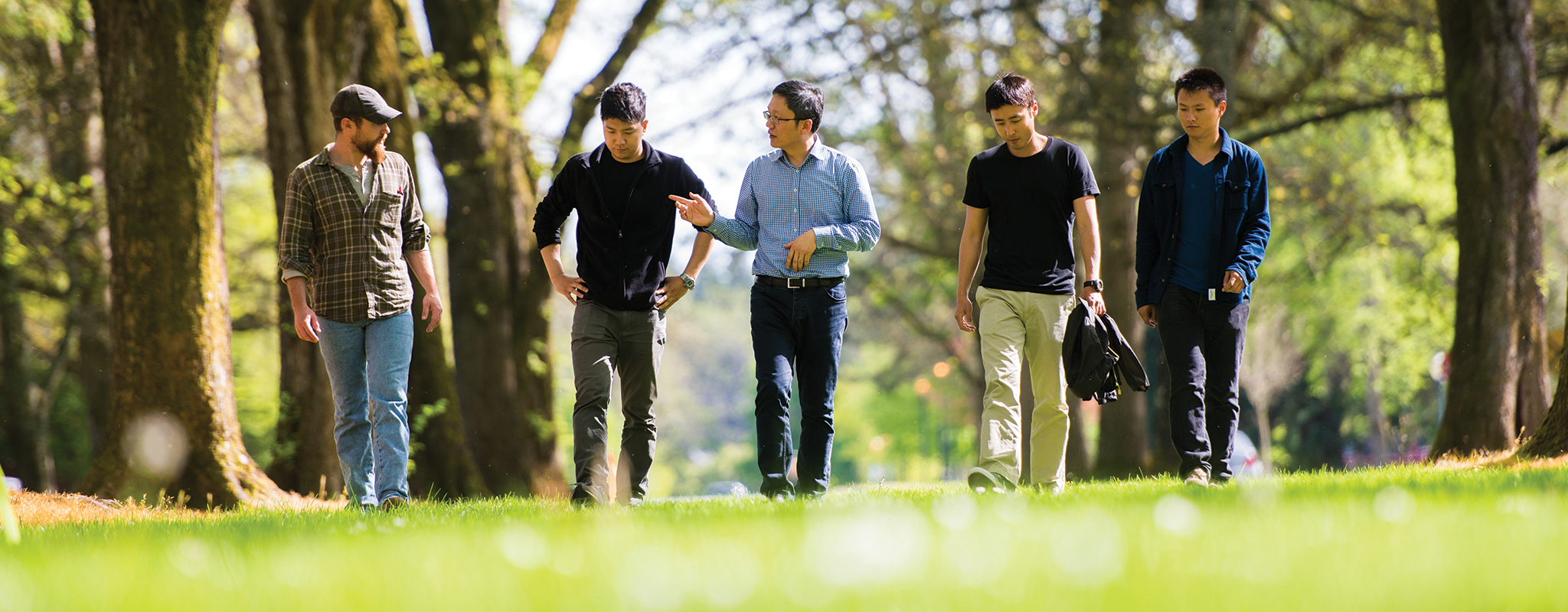Biennial FERM

Creating a safer future for foresters
Cable-assisted harvesting systems are gaining popularity in the Pacific Northwest.
Forest Engineering, Resources + Management 2017-2018
The Department of Forest Engineering, Resources & Management strives to support decisions for healthy, sustainable forests in the areas of forest management, engineering, biometrics, hydrology, forest health and silviculture. The department’s teaching and research emphasize all aspects of active forest management and restoration.
EDUCATION
- Forestry field school remains a signature part of the curriculum for college students. This two-credit course is required for admission into professional school and provides students a hands-on experience in the major aspects of forestry. Over the past two years, more than 130 students participated in the course.
- FERM’s sustainable forest management graduate program underwent a ten-year review as a continuing program in FY 2018. Graduate student exit interviews continue to indicate a very high level of satisfaction. Ninety-one percent of FERM graduate students ranked their experience in the program as above average and exceptional.
- Thanks to recent agreements, graduates from Umpqua and Southwestern Community Colleges will be accepted into FERM's professional school. More than 10 students joined the program in FY 2017 and 2018 after receiving their community college degrees.
- FERM faculty developed a suite of Ecampus courses that allow students to complete lower-division admission requirements for FERM's professional school online, making the four-year BS forestry degree more financially accessible for rural Oregonians.
RESEARCH
- The FERM department hired Kevin Lyons to serve as the Wes LeMatta Professor in Forest Engineering. Lyons will provide research thought leadership in the field of forest operations and engineering.
- FERM is committed to safety in the logging industry, and faculty are researching ways harvest workers can conduct their work away from steep slopes, where most fatal accidents occur, by investigating the feasibility, safety and cost-effectiveness of cable assisted, steep slope logging systems in Oregon forests.
- FERM faculty have found the use of tethered cut-to-length harvesting equipment can be used to operate on the slippery volcanic soils of central Oregon. Costs were much lower than cable systems making forest restoration more affordable. The estimated cost of biochar from the larger scale biochar facility evaluated in the project was only one-third of that of smaller facilities, making applications in commercial agriculture potentially viable while sequestering carbon.
- FERM faculty researched the impact of contemporary forest practices on watershed health and water quality. Researchers found that there appears to be a reduction in sedimentation after the 1970s, possibly as a result of the effects of the Oregon Forest Practices Act.
- FERM researchers studied emerging and reemerging forest diseases of the Pacific Northwest, including: Swiss needle cast, sudden oak death, black stain root disease, red needle cast and web blight on old growth and industrial forests to understand potential impacts and develop mitigation strategies.
OUTREACH
- FERM continued its BS Forestry Curriculum Advisory Committee, consisting of external forestry employers. The group worked throughout FY 2017 to improve curricula of the program and prepare students for future employer needs. FERM also renamed and refined the forest restoration and fire option of the forestry degree and successfully obtained certification of the option by the Association of Fire Ecology.
- Assistant Professor Tamara Cushing utilized survey instruments to explore the needs and challenges presented to logging contractors when working with small woodlands owners.
- Assistant Professor Bogdan Strimbu led an industry-focused meeting in FY 2018, focused on starting up a new research area in precision forestry. This expanded research focus will study the use of advanced technologies to improve forest-management results.